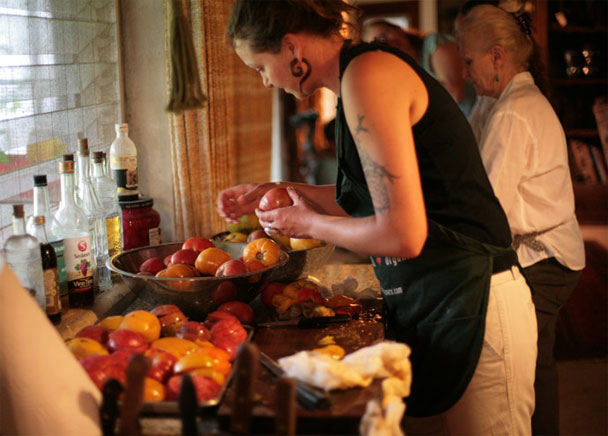To find Robert Barnum’s Possum Trot Tropical Fruit Nursery via GPS should be a simple affair. It is only 25 miles southwest of Miami’s bustling Design District; a numbered address on a numbered street. Start driving; you will be sent down crowded highways and through miles of suburban sprawl, past strip malls and more strip malls, until, eventually, the suburbs give way to farmland and the roads give way to gravel. You will see peacocks and packs of dogs roaming wild along these pocked farm roads, but you won’t see Possum Trot. The constellation of satellites that have Miami mapped down to the inch can’t help you find Barnum’s self–made Eden. This fact brings Barnum no small measure of joy.
Possum Trot sits on 40 acres in Miami’s Redland district, which along with Homestead is the agricultural heart of South Florida. That South Florida even has an agricultural heart is a surprise to many; not least of whom are South Floridians themselves. Ask a local about crops and you’ll hear about citrus, or maybe strawberries. More politically minded people will know about the plight of the state’s tomato pickers, or about Big Sugar and the ecological havoc it wrought on the Everglades. Less known, though, are the hundreds of varieties of mangoes and bananas that grow there; exotics like jackfruit and lychee; and ground crops like okra and green beans. The variety of food that is produced within 50 miles of downtown Miami is as staggering as it is underappreciated.
There is a steadily growing movement to increase both the awareness and consumption of this local harvest. One of the most visible advocates for growers in the area is James Beard Award–winning chef Michael Schwartz, of Michael’s Genuine, in Miami’s Design District. He, along with farmers like Margie Pikarsky and Gabriele Marewski, and local blogger Marian Wertalka, work to bring not only people to the Redlands but the Redlands to the people.
One of the more comprehensive initiatives on this front was the 2011 Earth Dinner, part of a series initiated by the Chefs Collaborative. About 40 people gathered at Possum Trot on a Saturday in late April, for a seven–course dinner produced almost entirely with locally sourced ingredients. An hour before guests arrived, the silver–haired Barnum and his crew were in full hustle; chopping, slicing, and sautéing. They were in the homestretch of a meal they’d been working on for the better part of a week.
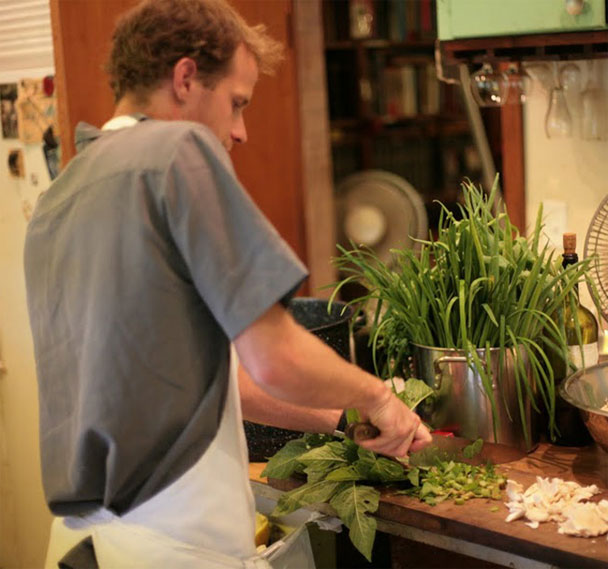
By 6 p.m., changed from his work–battered T–shirt into a crisp turquoise guayabera, Barnum was ready to lead the assembled guests on a predinner tour of the grounds. At the center of Possum Trot is Barnum’s house, built in 1946 by his uncle, in the old Florida Cracker style; that is, surrounded by a deep, shaded porch and with high vaulted ceilings of local cypress, both of which are intended to keep the house cool without air–conditioning. Stocked with the accumulation of 65 years of Barnums living and working on these grounds, the interior is overflowing with family heirlooms. The land around this house feels organic and unordered. Barnum prefers to start his trees from seed rather than cuttings, to indulge nature’s proclivity for mutation and variation. (For a more orderly and easily accessible version of Possum Trot, visit the nearby Fruit and Spice Park; it is the Felix Unger to Possum Trot’s Oscar Madison.)
“I plant randomly like God does in the forest. It confuses the viruses, it confuses the bugs, and it confuses the government inspectors,” Barnum explained with a slightly mirthless laugh. Florida’s ravaged economy and dysfunctional political system are as perilous to local farmers as are the droughts and hurricanes that regularly savage the state. Many growers are left feeling alternately beleaguered and persecuted. In the face of this, Barnum has created both an Eden and a fortress against the outside world.
His wariness has a counterweight in his love and knowledge of local botany. He knows each tree and plant growing on his land like a parent knows a child. He showed the group jaboticaba and bignay trees, the fruits of which he turned into wines that would be served with dinner. (There was also a surprisingly drinkable avocado wine from nearby Schnebly Redland’s Winery.) The tour passed mahogany trees, macadamias, and countless types of mango.
Led back into the house, the guests settled in at two long, ornately laid tables. The dinner started with an heirloom tomato and goat cheese salad, and with Barnum expounding on the importance of local food production: “It’s important that we know where our food comes from. If it’s from offshore, beware, because that’s the bootstraps of our nation—being able to feed itself.”
The courses came with explanations of ingredients and provenance. Tempura–fried betel leaf topped with blue crab from nearby Card Sound; vichysoisse made from potatoes foraged from the nearby plot of land where the state of Maine tests potato varieties; grass–fed beef shank with a bignay–oyster mushroom reduction; and grilled cobia, which was provided by spearfisher Jorge Figueroa, who provides day–boat seafood to Michael’s Genuine.
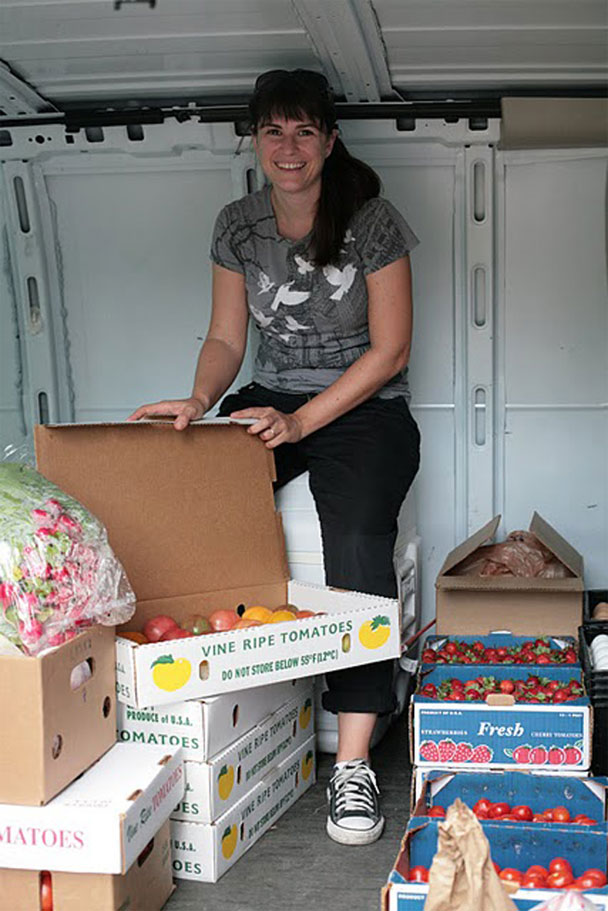
The final course was carambola (or star fruit) pie with Rangpur lime–sapodilla gelato and a scattering of Bee Heaven Farm’s Mysore raspberries. Along with the pie came a glass of Barnum’s 2006 vintage bignay dessert wine. Syrupy and intense, it tasted like a tawny port gone native.
Even in his absence, Michael Schwartz loomed large that evening; most of the people who provided for the dinner also supply his restaurant. These farmer–restaurateur relationships tend to be tricky, often mutually critical, but there’s no one whom Schwartz trusts more to manage them than his forager, Ali Lauria.
Lauria started out with Michael’s as a reservationist in 2007, six years after moving to Miami from Buenos Aires. One day Lauria tagged along on a foraging outing with one of the chefs, and was immediately hooked. “I just went with him once, and that was it.” She eventually made foraging her full–time vocation.
As the link between the farmer and the chefs, Lauria has the opportunity to exert influence on both sides of the ledger: to bring her discoveries to chefs, influencing a day’s specials, and to convey feedback from the restaurants to the growers, who will sometimes alter their production accordingly.
At least twice a week, she takes Schwartz’s white Chevy van and makes the rounds through Homestead and the Redlands. Her first stop is usually PNS Farms. The owner, Alice Pena, a soft–spoken former bank vice president, took over the farm four years ago. PNS Farms is now known as much for their eggs as for their tropical fruits. Her hens shade themselves under guava trees, and peck and scratch in a yard covered with a bed of palmetto fronds. The mix of greens, grubs, grains, and guava make for intensely colored egg yolks that are one of the big attractions at Schwartz’s always–packed Sunday brunch.
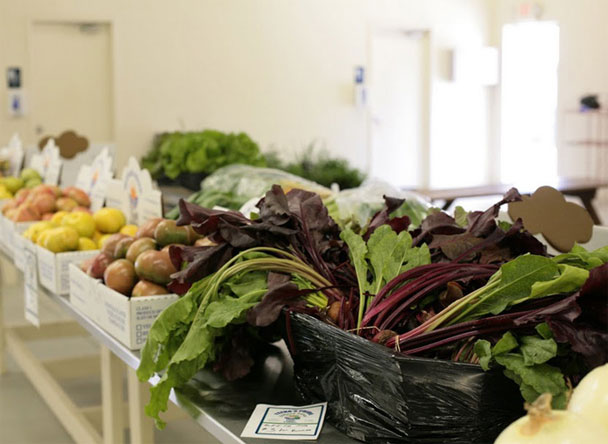
At her next stop, Teena’s Pride, Lauria was warmly greeted by the big and burly Michael Borek, Teena’s son and farm manager. Small talk quickly turned to tomatoes (which were nearly done for the season) and to some crops new for the next year, like Romanesco cauliflower and purple carrots. After loading the van with heirloom tomatoes and herbs, she headed to her next stop, Burr’s Berry Farm, for the last strawberries of the season and a gloriously ripe black sapote. Asked about the sign at the back of the stand listing Ceylon cherry tomatoes, Kathy Burr Magee said that customers found them too unusual–looking, and they hadn’t sold well. If Magee could find any left, she’d call.
As Lauria passed Possum Trot and Bee Heaven, the cicada ringtone on her phone chirped steadily. First was a call from a grower who would soon have blue java bananas. Next was Magee; they’d gathered half a flat of the Ceylon tomatoes, if she was interested. She was.
There are days when, almost before hitting the kitchen, Lauria’s haul will hit the Web. Michael’s Genuine’s fits the modern model of restaurant as media empire. Its multiple Twitter streams and constantly updated blog hook directly into Miami’s roiling food scene, keeping the community abreast not just of daily specials but also of what new ingredients have come their way, from whom, and how they will be used in the restaurant.
Schwartz is not the first Miami chef to focus on local ingredients, but he is the first to have this kind of soapbox, and consequently the first to be able to highlight his sources so publicly.
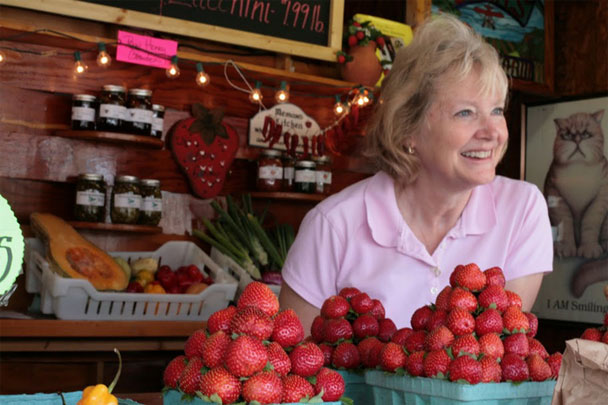
From his wood–burning oven come pizzas and roast chicken, and whatever Figueroa speared that morning. The bar separating the kitchen from the dining room is covered with tomatoes from Teena’s Pride, and local exotica is often featured; Bee Heaven’s Mysore raspberries, the unusual hua moa banana, or soon, the lemon crunch–variety jackfruit from another favorite provider, Paradise Farms. The kitchen uses them in applications closer in spirit to the Mediterranean than the Caribbean, as with the jackfruit, which has showed up on crostini, with local ricotta and honey.
It is a 45–minute drive from Michael’s Genuine to the Redlands and Homestead. It is these farms and gardens that hold the true wonders of Miami—not the beaches and boutiques. If you want to understand Michael’s, if you want to know Miami, if you want just a little sense of Eden in the lower 48, it is close at hand and easy to find, even by GPS.
Matthew Kronsberg is a writer and producer living in Brooklyn, New York. He has written recently for Gourmet Live about synesthesia and concert tour catering.

